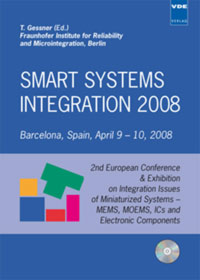Implantable brain stimulator for epilepsy seizure inhibit
Konferenz: Smart Systems Integration 2008 - 2nd European Conference & Exhibition on Integration Issues of Miniaturized Systems - MOMS, MOEMS, ICS and Electronic Components
09.04.2008 - 10.04.2008 in Barcelona, Spain
Tagungsband: Smart Systems Integration 2008
Seiten: 5Sprache: EnglischTyp: PDF
Persönliche VDE-Mitglieder erhalten auf diesen Artikel 10% Rabatt
Autoren:
Boero, Cristina; Bertrand, Daniel (Neuroscience Dept., Geneva University, Geneva, Switzerland)
Mazza, Marco; Ionescu, Adrian M. (Electronics Lab, EPFL, Lausanne, Switzerland)
Inhalt:
Epilepsy is a chronic disorder of the nervous system characterized by the abnormal synchronized firing of a large number of neurons; this event is known as epileptic seizure or ictal event. Animal models of epilepsy have been developed and have been extremely useful both for the analysis of the mechanisms underlying epilepsy and the screening of anticonvulsant treatments. However, the development of epilepsy treatments has been hampered by the large number of clinical manifestation of epilepsy. Not surprisingly, there are many ways to generate epilepsy in animals and each model can reproduce some of the clinical observations in humans. The most common models involve chemical convulsants, like penicillin, bicuculline, picrotoxin and pentylenetetrazol (PTZ). Convulsant agents activating excitatory system (such as kainic acid or NMDA) are equally effective at inducing epileptiform activity. Although electrical stimulation can suppress neuronal activity, daily stimulation of the central nervous system with short trains of pulses (kindling) is also capable of generating many of the symptoms observed clinically and does not involve any chemical agent. The goal of this work is to evaluate the practical feasibility of a miniaturized microsystem using conventional electronic components for epileptic event inhibition.


